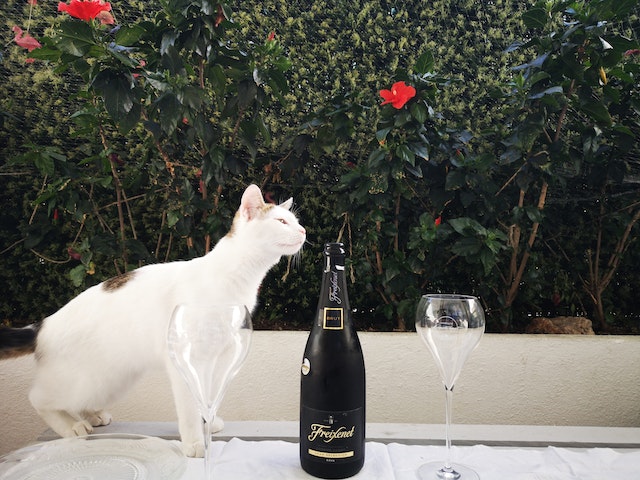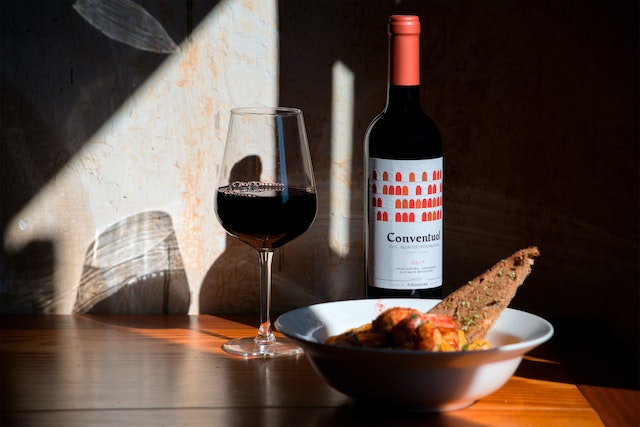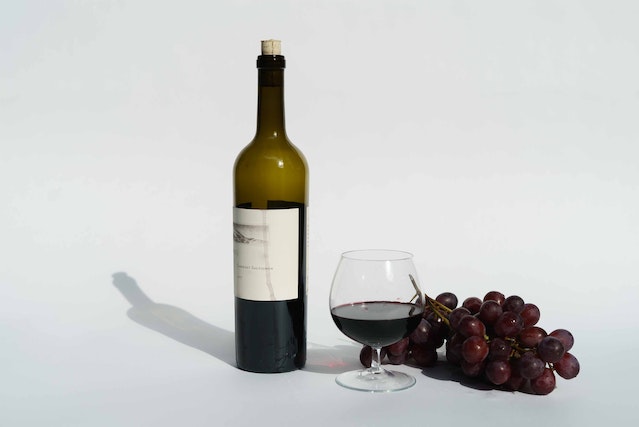Wine is a beverage that has been enjoyed for centuries, and there are many different types of wine to choose from. In this blog post, we will compare Cabernet Sauvignon and Merlot wines. Both of these wines are popular choices, but they have different characteristics. We will explore the differences between these two wines and help you decide which one is right for you. So, let’s get started!
When it comes to wine, there are a few key grapes that you need to know. Cabernet Sauvignon and Merlot are two of the most popular, and while they share some similarities, they also have their own unique flavors. So, which one should you choose? Let’s take a closer look at Cabernet Sauvignon vs Merlot and see what sets them apart.
Table of Contents
What Is Cabernet Sauvignon Wine?
Cabernet Sauvignon wine is a full-bodied red wine known for its robust flavors and aromas of dark berries, cassis, tobacco, black pepper, herbs, and cedar. Cabernet Sauvignon is usually dry with a high level of tannins and alcohol. The grapes are typically blended with other grapes such as Merlot or Cabernet Franc to enhance the complexity of the wine. The best examples of this varietal come from France’s Bordeaux region but it can also be found in other regions around the world including California in the United States. When aged properly, Cabernet Sauvignon wines can be enjoyed for many years after release. With its complex flavor profile and ability to age, Cabernet Sauvignon is a favorite among wine enthusiasts.
When served, Cabernet Sauvignon should be opened at least 30 minutes before serving in order to allow the aromas and flavors of the wine to fully open up. This full-bodied red pairs well with hearty dishes such as steak or game meats like pheasant and venison. Its high tannin levels also make it an excellent companion for hard cheeses like Parmigiano Reggiano or Pecorino Romano. With its versatility, Cabernet Sauvignon is sure to please any palate!
It’s clear why Cabernet Sauvignon has become one of the world’s most popular red wines. Whether you’re looking for a deep and complex wine to pair with food or just something to sip on its own, this classic varietal is sure to please. If you’re new to Cabernet Sauvignon, don’t be afraid to ask questions at your local wine shop or restaurant – they’ll be more than willing to help you find the perfect bottle!
Cabernet Sauvignon can also make an excellent gift idea! With its intense flavors and pleasing aromas, it’s sure to impress any recipient. Whether you’re giving a bottle of fine French Bordeaux or a California-produced version as a thoughtful gesture, Cabernet Sauvignon can be a great choice for any occasion. So the next time you’re looking for a quality red wine, consider giving Cabernet Sauvignon a try – you won’t be disappointed!
What Makes A Good Cabernet Sauvignon?
Cabernet Sauvignon wines are known for their rich flavor, tannic structure and complexity. They can be full-bodied or lighter and work well in a variety of food pairings. To make a truly exceptional Cabernet Sauvignon, winemakers must pay close attention to several factors.
Firstly, the quality of the grapes is essential. Cabernet Sauvignon requires grapes with thick skins that have been allowed to ripen fully on the vine–this helps them develop rich flavors and robust tannins that will give your wine its signature character.
The terroir also plays an important role in making great Cabernet Sauvignon. Cooler climates (with temperatures between 50 and 70 degrees Fahrenheit) allow for slower grape ripening, which helps the grapes to retain their acidity and develop more complex aromas. Soils that are rich in minerals can also add unique flavor notes to the wine.
Finally, winemaking techniques are key to producing a well-crafted Cabernet Sauvignon. Winemakers must carefully manage fermentation temperatures, oak aging and blending processes in order to achieve balance and complexity in the finished product. While there is no single recipe for success, these three factors–quality grapes, terroir and winemaking technique–are essential elements of what makes a great Cabernet Sauvignon wine.
With its deep flavor, tannic structure, and complexity of aromas, Cabernet Sauvignon is a favorite among wine lovers. When made correctly, it can be an absolute delight to drink! With the right combination of quality grapes, terroir, and winemaking techniques, you’ll be well on your way to producing delicious and memorable wines. Cheers!
>>> See more: How Cabernet Sauvignon Is Made
What Is Merlot Wine?
Merlot wine is made from the dark-skinned Merlot grape variety, which has a long history of being used to produce some of the world’s finest wines. The flavor profile of Merlot wines vary wildly depending on where they are produced and how they are aged, though generally speaking they can be described as having flavors of blackberry, plum and sometimes tobacco. Depending on the vintage year and production method, Merlot wines can range from medium-bodied to full-bodied in terms of body.
They also typically have low tannins compared to other red wines. This makes them an easy drinking choice for many palates and a great choice for pairing with food. Despite its wide availability and popularity amongst consumers, Merlot is often overshadowed by more famous varieties such as Cabernet Sauvignon and Pinot Noir.
However, Merlot is a delicious red wine with its own unique flavor profile that should be taken seriously by any serious oenophile. Its versatility allows it to pair well with many different types of food, making it an excellent choice for anyone who loves to entertain or simply enjoy the finer things in life. With its fruity yet complex flavors, Merlot pairs wonderfully with hearty dishes such as beef stew or pork roast; or lighter fare like chicken and fish. Whatever your preference may be, try a bottle of Merlot today and experience all that this wonderful grape variety has to offer!
What Are The Characteristics Of A Good Merlot?
Merlot can range from light bodied and fruity to full-bodied and rich, which makes it suitable for many wine drinkers’ preferences. When selecting a bottle of Merlot, be sure to pay attention to its color—it should be deep ruby with purple nuances when young. Also consider the concentration of tannins—low tannin levels will give a smooth, supple texture and higher tannins can create more structure and power. A good Merlot should also have notable aromas of dark fruit such as plums or blackberries. Lastly, take note of the finish—it should be long with lingering flavors of ripe fruit.
When it comes to food pairings, Merlot is known for its versatility. Its soft tannins allow it to pair well with foods that are rich in fat, such as grilled steaks or creamy cheese sauces. Additionally, dishes with earthy flavors like mushrooms or root vegetables taste great when combined with a glass of Merlot. Enjoying a bottle of good quality Merlot during your next meal is sure to elevate the flavors and make it a special occasion.
Merlot is a crowd-pleasing red wine varietal that has something to offer for everyone. With its balanced tannins and acidity, ripe fruit aromas, and long finish, it’s easy to see why this grape variety from Bordeaux is so popular. Whether you’re looking for an everyday red or something to enjoy with your next meal, Merlot can be a great option. Choose one that has been aged in oak barrels for complexity and depth of flavor and be sure to pay attention to the color, concentration of tannins, aromas, and finish. It’s sure to make any occasion more enjoyable!
Cabernet Sauvignon Vs Merlot Wine Comparison

Cabernet Sauvignon and Merlot wines have been popular for centuries, but how do they differ? This comparison will explore both varietals in terms of appearance, aroma, taste, texture, and aging potential.
Appearance: Cabernet Sauvignon tends to be a deeper red color than Merlot. The depth of the hue can vary depending on where it is grown. Merlot tends to be more translucent with purple hues that are lighter in intensity.
Aroma: Cabernet Sauvignon has aromas of blackcurrant and cedar while Merlot often displays notes of plum or blackberry. There may also be some spice or earthiness associated with either varietal, depending on the terroir of the region where it is grown.
Taste: Cabernet Sauvignon has a bolder taste than Merlot, often with more tannins and acidity. The flavors of black fruit are also common in Cabernet Sauvignon wines. Merlot has less tannin and acidity but can still have an intense flavor profile that includes hints of dark cherry, figs, and truffle.
Texture: Cabernet Sauvignon tends to be fuller bodied than Merlot with a thicker texture that coats the palate. Merlots are usually smoother with a velvety feel due to their lower levels of tannin.
Aging Potential: Both Cabernet Sauvignon vs Merlot are known for their ability to age well. Cabernet Sauvignon will often develop more complexity as it ages, while Merlot tends to soften over time. The amount of aging potential can vary depending on the region where the grapes were grown and how they were treated during production.
In conclusion, both varietals offer distinct flavor profiles that make them popular with wine enthusiasts around the world. While there are some similarities between these two wines, each has its own unique characteristics that set it apart from the other. If you’re looking for a bolder taste or prefer something softer and smoother, either varietal is sure to offer something to please.
The best way to find out which varietal suits you the most is by tasting them both side-by-side and deciding for yourself. With the right knowledge, you can explore each of these wines in detail and come away with your own personal preference. No matter your taste, Cabernet Sauvignon or Merlot, one thing is certain: either will bring a delicious glass of wine to any occasion! Enjoy!
>>> Read more:
FAQs About Cabernet Sauvignon Vs Merlot Wine
Both Cabernet Sauvignon and Merlot are popular red wines, but they have some distinct differences. Here are answers to commonly asked questions about these two varieties:
What Is The Main Difference Between Cabernet Sauvignon And Merlot?
The most obvious difference between Cabernet Sauvignon vs Merlot is their flavor profile. Cabernet Sauvignon tends to be fuller-bodied, with a more robust tannin structure and pronounced aromatics of blackcurrant, cedar, and tobacco. By comparison, Merlot has softer tannins and more fruit-forward flavors of dark cherry, plum, chocolate, and herbaceous notes.
Does One Variety Have More Alcohol Than The Other?
Generally, Cabernet Sauvignon has slightly higher levels of alcohol content than Merlot. A typical bottle of Cabernet Sauvignon will contain around 14% -15% ABV, while a bottle of Merlot typically has an ABV of 12%-13%.
Which Variety Is Better Suited To Aging?
Both varieties are capable of aging well and developing complexity with age. However, Cabernet Sauvignon usually has more structure and body than Merlot, which makes it better suited for long-term cellaring. As it ages over time, the tannins in Cabernet Sauvignon mellow and create a more balanced, smooth wine.
Does One Variety Pair Better With Food Than The Other?
Both Cabernet Sauvignon vs Merlot can be enjoyed with a wide range of foods. However, due to its higher tannin content, Cabernet Sauvignon generally pairs best with bolder flavors such as grilled meats or rich stews. Meanwhile, Merlot’s softer tannins make it an ideal match for lighter fare like fish or poultry dishes. No matter which variety you choose to enjoy, there are plenty of delicious pairing options!
Are There Particular Regions That Are Better For Producing One Variety Over The Other?

Cabernet Sauvignon is grown in many different wine-producing regions around the world, from California to France. Merlot is also widely planted, but it is particularly celebrated in Bordeaux and Pomerol where it often blends nicely with Cabernet Sauvignon to create a classic red blend.
Is Merlot More Bitter Than Cabernet?
The answer to the question “Is Merlot more bitter than Cabernet?” is not a simple yes or no. It depends on the growing conditions and winemaking techniques used for each wine. Generally, Merlot wines tend to be milder and fruitier than Cabernet Sauvignon wines, which have bold tannins that give them a more intense, dry flavor. However, it is also possible to produce Merlots with high tannin levels that can rival some Cabernets in bitterness. Ultimately, tasting individual examples of both grapes will allow you to determine which one has the desired level of bitterness for your taste preferences.
Why Is Cabernet More Expensive Than Merlot?
The major difference between Cabernet and Merlot comes down to two factors: tannin content and aging potential. Cabernet Sauvignon grapes contain higher levels of tannins than Merlot, making them more expensive to produce in terms of time and labor. Tannins provide a bitter taste in wine that many people find appealing, but they also help the wine age longer without spoiling. As such, producers must invest more time and energy into aging Cabernets versus Merlots. This is why aged bottles of Cabernet can fetch higher prices at auction than their Merlot counterparts.
Moreover, if a producer intends to make a fine, complex red blend from both varieties, the higher cost of Cabernet makes sense. All in all, the differences between Cabernet and Merlot are ultimately rooted in production costs and aging potential, making Cabernet more expensive than Merlot.
In addition to these factors, the inherent popularity of Cabernet also contributes to its higher cost. Since it has become a widely recognized variety of wine around the world, producers are able to charge higher prices for their bottles due to increased demand. As such, consumers will often find that they have access to more affordable bottles of Merlot compared with those of Cabernet Sauvignon. Ultimately, these two key factors – tannin content and aging potential combined with broader consumer recognition – contribute to why Cabernet Sauvignon is more expensive than Merlot.
However, it is important to note that cost does not necessarily indicate a better quality of wine. While Cabernet may be more expensive in some cases, there are many excellent bottles of Merlot available on the market as well. Ultimately, discovering which variety you prefer comes down to personal preference and experimenting with different wines and styles. Because of this, it can be beneficial to explore both varieties before settling on a favorite.
Conclusion
Cabernet Sauvignon vs Merlot – If you are looking for a wine that is sure to impress your guests, go for the Cabernet Sauvignon. If you want a dependable wine that pairs well with most foods, Merlot is your best bet. When in doubt, ask your trusted wine vendor for their expert opinion – they will be more than happy to help you choose the perfect bottle of wine for any occasion. Meramec River Wine Trail – Thanks for reading!

